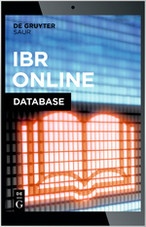- 04 Июнь 2021
Информация о Статье/Публикации
Просмотров: 1510
ТЕХНО-ТЕЛЕПАТИЯ И РОБОТОТЕХНИКА БЕЗЗВУЧНОГО ДОГОЛОСОВОГО РАСПОЗНАВАНИЯ РЕЧИ: ЧИТАЮТ ЛИ АНДРОИДЫ ЭЛЕКРИЧЕСКИЕ МЫСЛИ?
| Название на языке публикации: | TECHNO-TELEPATHY & SILENT SUBVOCAL SPEECH-RECOGNITION ROBOTICS: DO ANDROIDS READ OF ELECTRIC THOUGHTS? |
| Автор: | ВИРГИЛ В. БРОВЕР |
| Издание: |
HORIZON. Феноменологические исследования. Том 10, №1 (2021), 232-257 |
| Язык: | Английский |
| Тип публикации: | Статья |
| DOI : 10.21638/2226-5260-2021-10-1-232-257 | PDF (Загрузок: 1763) |
Аннотация
В центре этого исследовательского проекта — интерфейс беззвучного и доголосового распознавания речи, реализованный в 2018 году в качестве устройства, носимого в амбулаторных условиях на шее и считывающего биотоки мышц с помощью электродов на поверхности лица, горле и шее. Эти биотоки возникают из предполагаемого «намерения говорить» носителя прибора, молчаливо-что-то-говорящего-самому-себе. Считается, что этот внутренний голос проявляется при чтении «про себя» или при мысленном разговоре с самими собой. Аппарат не требует произнесения звуков, открывания рта или какого бы то ни было внешне видимого движения губ. В статье эта доголосовая речь рассматривается как способ письма или говорения, а ротовая полость как поверхность для письма. Кратко рассматриваются дискуссии о телепатии, чтобы переосмыслить предостережение Хайдеггера против встраивания языка исключительно в рамки руководствующейся подсчётом техники и физиологии, которую он считает губительной для Mundarten (привычки речевого аппарата, характерные для региональных диалектов). Статья завершается пересмотром гуссерлевской феноменологии языка и значения в Идеях, в той мере в какой она может быть применена к интерфейсам доголосового распознавания речи. Предлагаются направления, по которым электрофизиология, которую считывает и расшифровывает устройство (как предполагаемое намерение непроизнесенного вслух или громко высказывания на естественном языке) может дополнить Гуссерлевские размышления о Leiblichkeit языка, проявляющуюся через само-запечатлевающееся извлечение расширения смысла.
Ключевые слова
намерение, значение, язык, телепатия, кибернетика, логика, воплощение, устная речь.
References
- Abercrombie, D. (1965). Studies in Phonetics and Linguistics. London: Oxford University Press.
- Ableman, P. (1969). The Mouth and Oral Sex. London: Running Man Press.
- Agamben, G. (2015). The Use of Bodies. Stanford: Stanford University Press.
- Ankersen, C., & Zbrînea, A. (2019). Pink Pong. Bucureşti: frACTalia.
- Arai, M., Tsumita, M., Sato, Y., Kitagaa, N., Sugiyama, I., & Sugiyama, M. (2004). Clear Visualization of Palatography with an Indelible Felt-Tip Pen. The Journal of the Showa University Dental School, 24 (4), 381-386.
- Beadnell, C. M. (1942). The Origin of the Kiss. London: Watts & Co.
- Bostrom, N. (2014). Superintelligence. Oxford: Oxford University Press.
- Brower, V. (2011). Speech and Oral Phenomena. French Literature Series, 38, 209-230. doi: 10.1163/9789401207591_014
- Brower, V. (2020). Genealogy of Algorithms. Le Foucaldien, 6 (2). doi: 10. 10.16995/lefou.74
- Chardin, P. T. (1960). Oeuvres de Pierre Teilhard de Chardin, Vol. 1. Paris: Editions de Seuil.
- Chardin, P. T. (2008). The Phenomenon of Man. New York: Harper Perrenial.
- Chrétien, J-L. (2014). The Ark of Speech. London: Routledge.
- Christian, B., & Griffiths, T. (2016). Algorithms to Live By. New York: Henry Holt & Co.
- Cixous, H. (1987). The Parting of the Cake. In J. Derrida & M. Tlili (Eds.), For Nelson Mandela (201-217). New York: Seaver Books.
- Cixous, H. (1998). Stigmata: Escaping Texts. New York: Routledge.
- Cixous, H. (2004). Portrait of Jacques Derrida as a Young Jewish Saint. New York: Columbia University Press.
- Cixous, H. (2007). Insister of Jacques Derrida. Edinburgh: Edinburgh University Press, 2007.
- Cixous, H. (2009). Hyperdream. Malden: Polity.
- Cixous, H. (2011). Philippines. Malden: Polity Press.
- Deleuze, G. (1990). The Logic of Sense. New York: Columbia University Press.
- Deleuze, G. (1994). Difference and Repetition. New York: Columbia University Press.
- Deleuze, G. (2003). Francis Bacon. Minneapolis: University of Minnesota Press.
- Deleuze G., & Guattari, F. (1972). L’anti-oedipe. Pairs: Les Éditions de Minuit.
- Deleuze, G., & Guattari, F. (1983). Anti-Oedipus. Minneapolis: University of Minnesota Press.
- Derrida, J. (1973). Speech and Phenomena. Evanston: Northwestern University Press.
- Derrida, J. (1974). Of Grammatology. Baltimore: The Johns Hopkins University Press.
- Derrida, J. (1978). Writing and Difference. Chicago: University of Chicago Press.
- Derrida, J. (1998). Psyché: Inventions de l’autre. Nouvelle édition. Paris: Éditions Galilée.
- Derrida, J. (2005a). Justices. Critical Inquiry, 31 (3), 689-721. doi:10.1086/430991
- Derrida, J. (2005b). On Touching—Jean-Luc Nancy. Stanford: Stanford University Press.
- Derrida, J. (2007). Pysche: Inventions of the Other, Vol. 1. Stanford: Stanford University Press.
- Derrida, J. (2009). The Beast and the Sovereign, Vol. 1. Chicago: University of Chicago Press.
- Dick, P. K. (2017). Do Androids Dream of Electric Sheep? Filmed as Blade Runner. London: Orion Publishing.
- Eckhart, M. (2009). The Complete Mystical Works of Meister Eckhart. New York: Crossroad.
- Freud, S. (1955). The Standard Edition of the Complete Psychological Works of Sigmund Freud, Vol. 18. London: Hogarth Press and the Institute of Psycho-Analysis.
- Freud, S. (1998). Totem and Taboo. Mineola, New York: Dover.
- Gibson, W. (1988). Mona Lisa Overdrive. London: Orion Publishing Group.
- Haden, E. F. (1938). The Physiology of French Consonant Changes. New Haven: Yale University Press.
- Hegel, G. W. F. (1969a). Wissenschaft der Logik I. Werke, Band 5. Frankfurt am Main: Suhrkamp.
- Hegel, G. W. F. (1969b). Wissenschaft der Logik II. Werke, Band 6. Frankfurt am Main: Suhrkamp.
- Hegel, G. W. F. (2007). Philosophy of Mind [Encyclopedia, 3]. Oxford: Oxford University Press.
- Hegel, G. W. F. (2010). The Science of Logic. Cambridge: Cambridge University Press.
- Heidegger, M. (1971). On the Way to Language. New York: Harper & Row.
- Heidegger, M. (1985). Gesamtausgabe, Band 12. Frankfurt am Main: Vittorio Klostermann.
- Heidegger, M. (1999). Contributions to Philosophy (From Enowning). Bloomington: Indiana University Press.
- Henry, M. (1973). The Essence of Manifestation. The Hague: Martius Nijhoff.
- Henry, M. (1975). Philosophy and Phenomenology of the Body. The Hague: Martius Nijhoff.
- Hueber T, Chollet, G., Denby, B., & Stone, M. (2008). Acquisition of Ultrasound, Video, and Acoustic Speech Data for Silent-Speech Interface Application. Proceedings of IISP, 365-369.
- Husserl, E. (1976). Ideen zu einer reinen Phänomenologie und phänomenologischen Philosophie, Erstes Buch. Den Haag: Martinus Nijhoff.
- Husserl, E. (1999). Cartesian Meditations. Dordrecht: Kluwer Academic.
- Husserl, E. (2012). Ideas Pertaining to a Pure Phenomenology and to a Phenomenological Philosophy. First Book: General Introduction to a Pure Phenomenology. London: Routledge Classics.
- Ingarden, R. (1983). Man and Value. Wien: Philosophia Verlag.
- Jorgenson, C., & Binsted, K. (2005). Web Browser Control Using EMG Based Sub Vocal Speech Recognition. In HICSS’05: Proceedings of the 38th Annual Hawaii International Conference on System Sciences (294a-294c). doi: 10.1109/HICSS.2005.683
- Kant, I. (1905). Gesammelte Schriften, Band 2. Berlin: Druck und Verlag von Georg Reimer.
- Kant, I. (1974). Die Religion innerhalb der Grenzen der bloßen Vernunft. Stuttgart: Reclam.
- Kant, I. (1996). The Cambridge Edition of the Works of Immanuel Kant: Religion and Rational Theology. Cambridge: Cambridge University Press.
- Kant, I. (2002). The Cambridge Edition of the Works of Immanuel Kant: Theoretical Philosophy, 1755-1770. New York: Cambridge University Press.
- Kapur, A., Kapur, S., & Maes, P. (2018). Alter Ego: A Personalized Wearable Silent Speech Interface. IUI 2018 [Intelligent User Interfaces] (7-11 March), 43-53. doi: 10.1145/3172944.3172977
- Keynes, J. M. (2017). A Treatise on Probability. Lexington: Wildside Press.
- Kirby, V. (1997). Telling Flesh: The Substance of the Corporeal. New York: Routledge.
- Kittler, F. (1999). Gramophone, Film, Typewriter. Stanford: Stanford University Press.
- Kristeva, J. (1989). Language—The Unknown. New York: Columbia University Press.
- Levinas, E. (1961). Totality and Infinity. Pittsburgh: Duquense University Press.
- Mackey, A. (1958). Discernment of Taste Substances as Affected by Solvent Medium. Journal of Food Science, 23 (6), 580-583.
- Marion, J-L. (2002). Being Given. Stanford: Stanford University Press.
- Marion, J-L. (2003). Le phénomène érotique. Paris: Éditions Bernard Grasset & Fasquelle.
- Marion, J-L. (2007). The Erotic Phenomenon. Chicago: University of Chicago Press.
- Marion, J-L. (2016). Givenness and Revelation. Oxford: Oxford University Press.
- Moravec, H. (1999). Robot. Oxford: Oxford University Press.
- Moses, E. R. (1940). Interpretations of a New Method in Palatography. Ann Arbor: Edwards Brothers, Inc.
- Moses, E. R. (1964). Phonetics: History and Interpretation. Englewood Cliffs: Prentice-Hall.
- Nancy, J-L. (2008). Corpus. New York: Fordham University Press.
- Pascal, B. (1963). Œuvres complètes. Paris: Éditions du Soleil.
- Pynchon, T. (2013). Bleeding Edge. New York: Penguin.
- Serres, M. (1985). Les cinq sens: Philosophie des corps mêlés, 1. Paris: Grasset.
- Serres, M. (2008). The Five Senses. London: Continuum.
- Solymosi, T. (2011). Neuropragmatism, Old and New. Phenomenology and the Cognitive Sciences, 10 (3), 347-368. doi: 10.1007/s11097-011-9202-6
- Tseng, A., & Levin, M. (2013). Cracking the Bioelectrical Code. Communicative and Integrative Biology, 6 (1), e22595, 1-8. doi: 10.4161/cib.22595
- Uexküll, J. (1957). A Stroll through the Worlds of Animals and Men: A Picture Book of Invisible Worlds. In C.H. Schiller (Ed.), Instinctive Behavior: The Development of a Modern Concept (5-80). New York: International Universities Press, Inc.
- Whitehead, A. N. (1957). Process and Reality. New York: Harper & Row.
- Wiener, N. (2013). Cybernetics (2nd edition). Mansfield, CT: Martino Publishing.
- Winterson, J. (1992). Written on the Body. New York: Vintage.
- Zellini, P. (2020). The Mathematics of the Gods and the Algorithms of Men. London: Allen Lane.
- Zsiga, E. C. (2013). The Sounds of Language. Malden: Wiley-Blackwell.

Это произведение доступно по лицензии Creative Commons «Attribution-NonCommercial» («Атрибуция — Некоммерческое использование») 4.0 Всемирная.
 |
|
| |
|
 |
|
| |
|
 |
|
| |
|
| |
|
| |
|
| |
|
| |
|
| |
|
| |
 |
| |
|
| |
|
| |
|
| |
|
| |
|
| |
|
| |
|
| |
|
 |
 |
Мы в социальных сетях:





